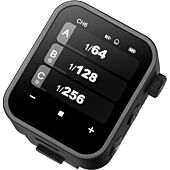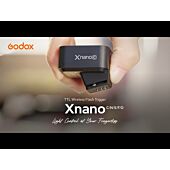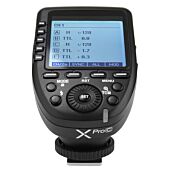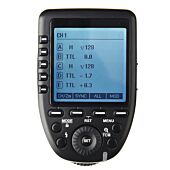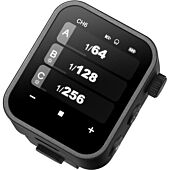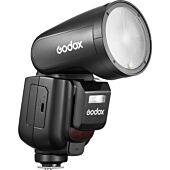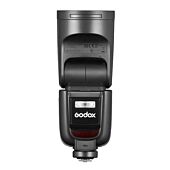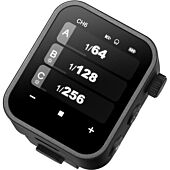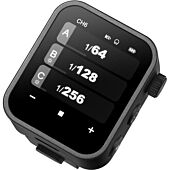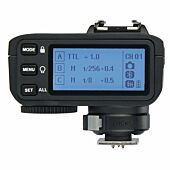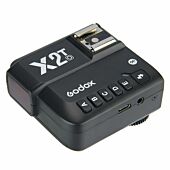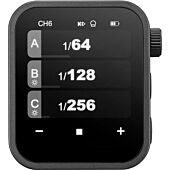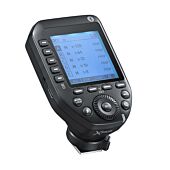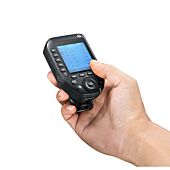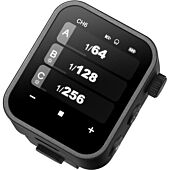Flash Lighting
Shop our range of flash lighting from studio flash to portable flash as well as flash lighting kits, all from top brands including Godox, Visico and Lencarta. Available in a range of power and model types and kits to suit your budget and needs
What is Flash Lighting?
Flash lighting (or strobe lighting / monolight as it’s referred to in America) are devices that emit a strong artificial light for a designated period (usually fractions of a second) to light a background or subject. The flash unit will be connected with the camera so that the light ‘flashes’ just as the shutter opens and then closes on the camera, enabling the photographer to capture the perfect photograph. Flash lighting can also be paired with lighting modifiers such as umbrellas or softboxes.
Why Use Flash Lighting?
Quite simply - to capture the perfect picture with your camera. If your camera flash is not up to the job, your work area is too dark, the light is not the right colour temperature, or there are shadows in certain corners etc. then you want to consider flash lighting to fill in the gaps and fully illuminate your subject area. More importantly, flash lighting allows you to supplement natural light shoots providing a more balanced controllable exposure.
What to look for in your flash lighting– a Quick 101 Buyer's Guide
Manual or TTL
All modern flash lighting now comes with TTL as standard. This is where the camera and flash analyse both the environment and camera settings to automatically set the correct power setting in the flash. If you are old-school you might want the option to do this manually.
Power / Watt Seconds
Studio flash output is measured in Watt Seconds. We offer studio flashes from 100Ws all the way up to 1200Ws. The AD200 Pro which is 200Ws will be ample for most home setups or small studios. At the other end, professional or mid to large sized studios might prefer the AD400 Pro or AD600 Pro, at 400Ws and 600Ws respectively. As with everything in life, more power means more money – so work to your budget and needs on this one.
How many do I need?
A typical professional or even home studio setup will need no more than 4 flash lights, one at each corner pointing towards the subject. However, if you’re on a shoestring budget you can buy a single powerful light and use reflectors to redirect and shape the light.
Power Control
As a serious photographer you will want the ability to control how much power your flash light outputs, to either turn it up or down. This can vary quite a bit across models so choose carefully. If you need utmost control then pick any model other than AD200 OR AD600 Pro as these two adjust in 3rds whilst the other can be adjusted in 1/10 increments.
Flash Duration
This is about how much and how quickly the light will deliver the flash, not such a big decision for portrait shots (1/3000 of a second would do) but when you are shooting action or a moving subject you will need a fast flash to capture the subject and avoid the dreaded motion blur such (use a setting such as 1/10000 of a second). Make sure your model offers a good selection of settings.
Recycle Time
This is simply how quickly it’s ready to fire again. If you are taking action or moving subject shots then you want it to recycle as quickly as possible. Most of our lights take between 0.01 and 2.5 seconds to recycle, with the AD600 taking up to 0.01-2.5 seconds and the AD400 recycling in as little as 0.01-0.9 seconds.
Modelling Light
A good quality flash light should also come with a built-in modelling lamp, basically a normal incandescent light that you can use to illuminate the subject and get an idea of how the flash will fall on the subject.
Flash Tube
Is it replaceable and can you do it yourself? On some flash units they are not replaceable or you have to send it away to get the flash tube replaced. All our Godox flash lighting (excluding the speedlights or the AD100) offer easy to replace flash tubes which can be purchased separately from our accessories section.
Firing Methods
Most flash units will fire from either a sync cord (sold separately) or a built-in optical slave cell. Another popular choice is to use a wireless slave trigger (sold separately). Personally, I would purchase a flash trigger for convenience and efficiency, especially if you are working from height etc. as you don’t want to be going up and down ladders to adjust your flash.
Heating / Cooling
Flash lights can get extremely hot, especially after prolonged use, make sure your flash unit is of a good build quality and suited to your climate and needs. All Godox flash units (excluding the speedlights and the AD200) include built in technology to cool and dissipate heat from the device, ensuring it doesn’t overheat and is safe to use.

